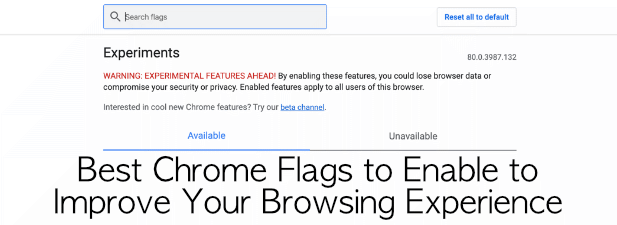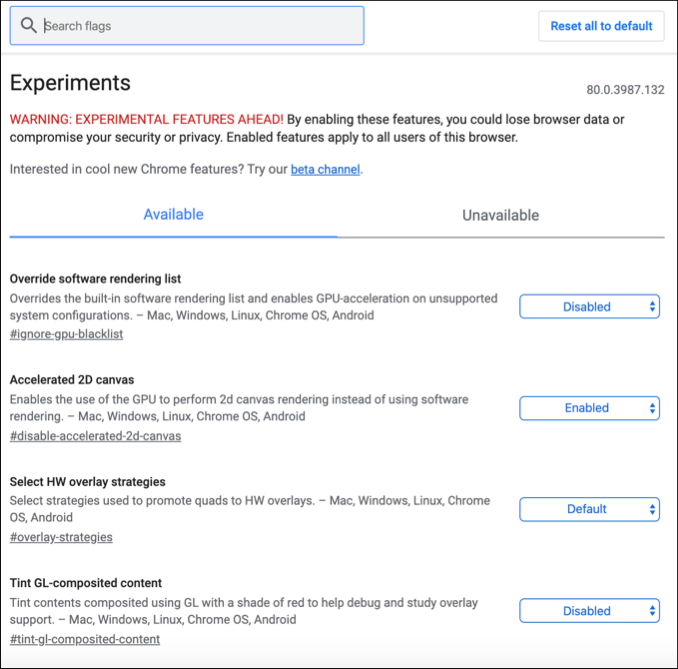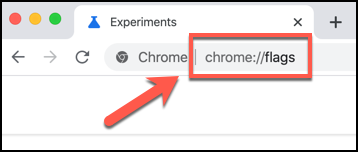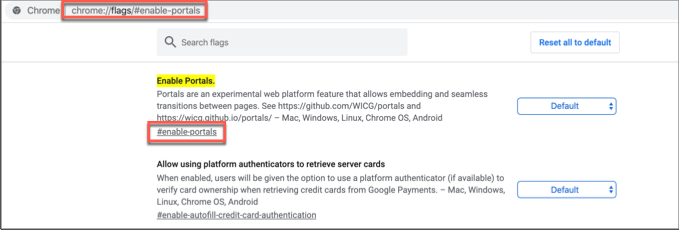Google Chrome is one of the most popular web browsers available for mobile devices and desktop PCs—but what you see definitely isn’t all you get. If you want a basic browsing experience, Chrome offers that, but you can extend and modify Chrome to suit your own needs. One way to do this is to enable Chrome flags.
These are hidden settings and features that you can enable to change how Chrome works. You don’t need to install anything extra to do this, as these flags can be accessed from a secret menu using the address bar.
Here are some of the best Chrome flags you can use to improve your browsing experience, as well as a run-through on how to enable them.

What Are Chrome Flags and Why Should I Enable Them?
As we’ve mentioned, Chrome has a hidden menu with hundreds of different settings and features you can enable, disable, or change to alter how Chrome works. These are called Chrome flags—some of these flags are features or settings that are new and experimental, while others are under-the-hood settings that are kept hidden.
Rather than hide these settings away completely, Chrome users who know where to look can access them by typing chrome://flags in the address bar. This works on the PC and Mac versions of Chrome, as well as on Chrome for mobile.

In most cases, enabling Chrome flags will only tweak your Chrome browsing experience, rather than completely alter it. Some of the best Chrome flags on offer are designed to improve this—take, for instance, the grouped tabs and smooth page scrolling flags, which we’ll cover later in this article.
You don’t need to use Chrome flags, but if you do, you can gain full advantage of some of Chrome’s hidden secrets in the process. You can also use Chrome flags to help reduce memory usage as a possible way to stop Chrome crashing, for instance.
How to Enable or Disable Chrome Flags
It’s an easy process to enable or disable Chrome flags, and this process is the same, regardless of your version of Chrome or the device you’re using. Some of the flags you have access to may vary, however.
- To access the Chrome flags menu, type chrome://flags in the address bar. You can also access this menu by typing chrome://chrome-urls and clicking the chrome://flags link listed.

- You can also link to a flag directly. This will load the Chrome flags menu and highlight the particular flag. Links for each flag are shown beneath each entry—to use them, type chrome://flags/#sample-flag in your address bar, replacing #sample-flag with your flag.

- Available flags for your device will be listed under the Available tab on the Chrome flags menu page, while flags you can’t access or use are shown under the Unavailable tab.
Basic flags will have options to be Enabled or Disabled, as well as a Default option if the flag has a Chrome default setting in place. There are also custom options for more complex flags. - To enable or disable a Chrome flag, click the drop-down menu next to a flag and choose Enabled to enable it or Disabled to disable it.

Your Chrome flags will be applied automatically but, in many cases, you’ll need to restart your browser to see it applied.
The Best Chrome Flags to Try
There are hundreds of experimental flags available to try and use on the Chrome flags page, but the best ones are features that’ll probably make their way into the main Chrome browser as main features at some point or another.

To get you started, however, here are ten of the best Chrome flags you can try right now. You can find these by searching for the #flag tag in the Chrome flags menu.
Smoother Pages with the Smooth Scrolling Flag
This flag will help you if you’re finding page scrolling to be jerky or unnatural on your device. Enabling this will turn on a more fluid animation for scrolling pages. To enable it, search for #smooth-scrolling.
Enable HTTP/3 QUIC Support for Faster Browsing
HTTP/3 is a Google-designed protocol to help speed up browsing on the internet. Also named QUIC, the #enable-quic flag will turn this setting on, but it’ll only work with sites that have been designed with QUIC in mind.
Hide Chrome Extension Icons with the Extensions Toolbar Flag
If you have too many Chrome extension icons appearing next to your address bar, making the Chrome UI look a little messy, then Google has you covered with the #extensions-toolbar-menu flag. This will place all of the icons into a single, drop-down menu to keep things tidy.
Faster Downloads with the Parallel Downloading Flag
Chrome downloads aren’t always the quickest but enabling the #enable-parallel-downloading flag could help. This forces Chrome to split any in-progress downloads into smaller parts that download at the same time, maximizing your connection speed and speeding up downloads in the progress.
Check Your Password Security with the Password Leak Detection Flag
From one month to the next, sites get hacked and passwords get leaked. The #password-leak-detection flag will alert you if any Google-saved passwords end up on a publicly-leaked database like HaveIBeenPwned, making it easier to know if your passwords are still safe to use or if you need to change them.
Group Tabs Together with the Tab Groups Flag
The more open tabs you have, the harder it is to know one site from the next. Using the #tab-groups flag allows you to group together tabs into different sections, letting you keep relevant sites organized and together.
Search Your Open Tabs with the Omnibox Tab Switch Suggestions Flag
You can use the #omnibox-tab-switch-suggestions flag to search through your open tabs using the address bar. This enables a button you can press next to any detected tab name to switch to that tab—perfect if you can’t find the open tab you’re looking for.
Better Network Security with WebRTC IP Anonymizing Flag
Letting Chrome pages access your device capabilities (like your webcam or microphone) can unwittingly reveal more data than you realize, including the IP addresses of devices on your local network. The #enable-webrtc-hide-local-ips-with-mdns flag will hide any local IP addresses that would otherwise be leaked.
Go Dark with the Force Dark Mode Flag
Most operating systems now offer a dark mode that inverts colors to help reduce eye strain. Chrome has this feature too, but not every page is willing to cooperate. Thankfully, you can force more websites to switch to dark mode using the #enable-force-dark flag.
Better Browsing with Google Chrome

The best Chrome flags to enable are designed to tweak the Chrome browsing experience, rather than completely change it. These flags are subject to change, however—most are experimental, and you may find that they’re removed from Chrome or integrated into the main Chrome browsing experience at a later date.
There are other ways you can improve Chrome, however. For instance, you could install Chrome extensions to extend its functionality even further. What tricks do you use to make Chrome better for you? Let us know in the comments below.